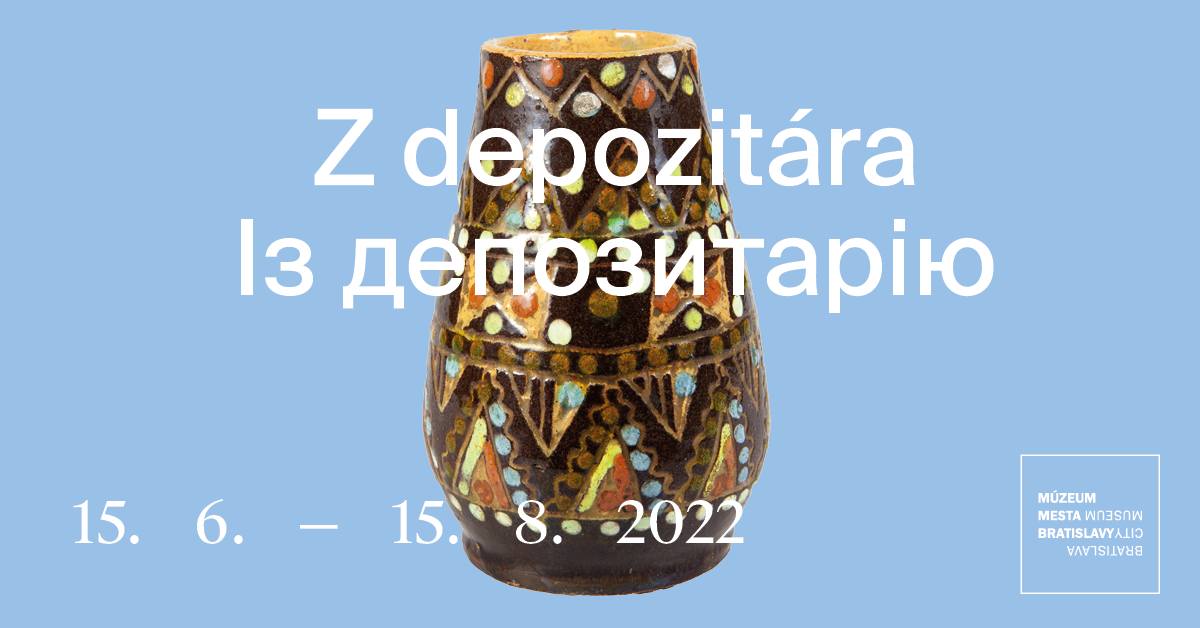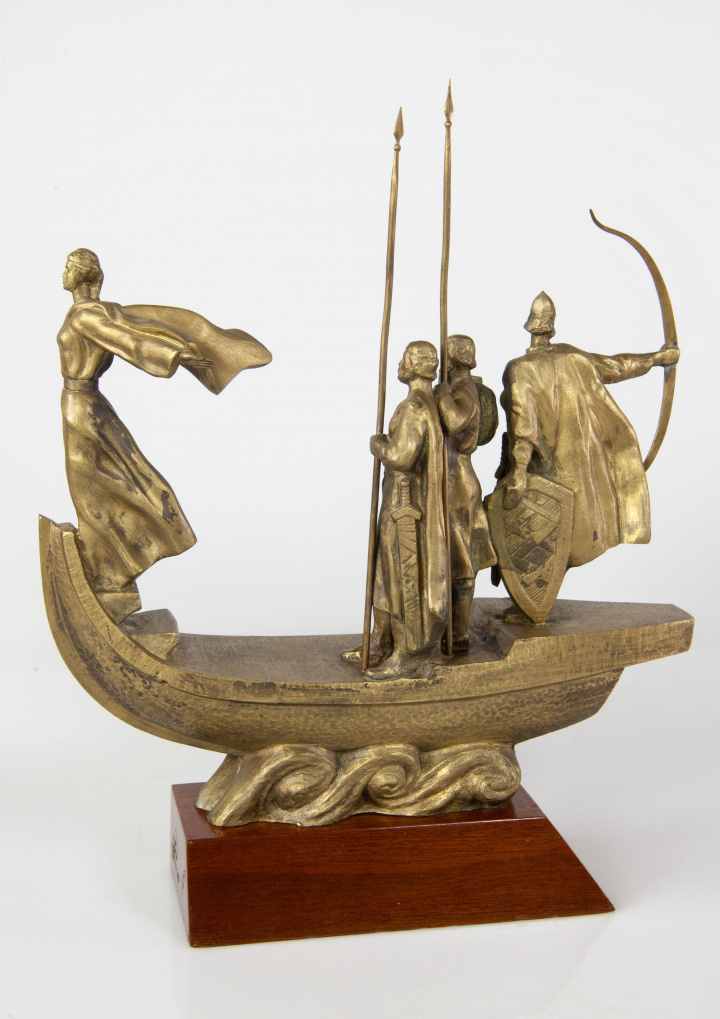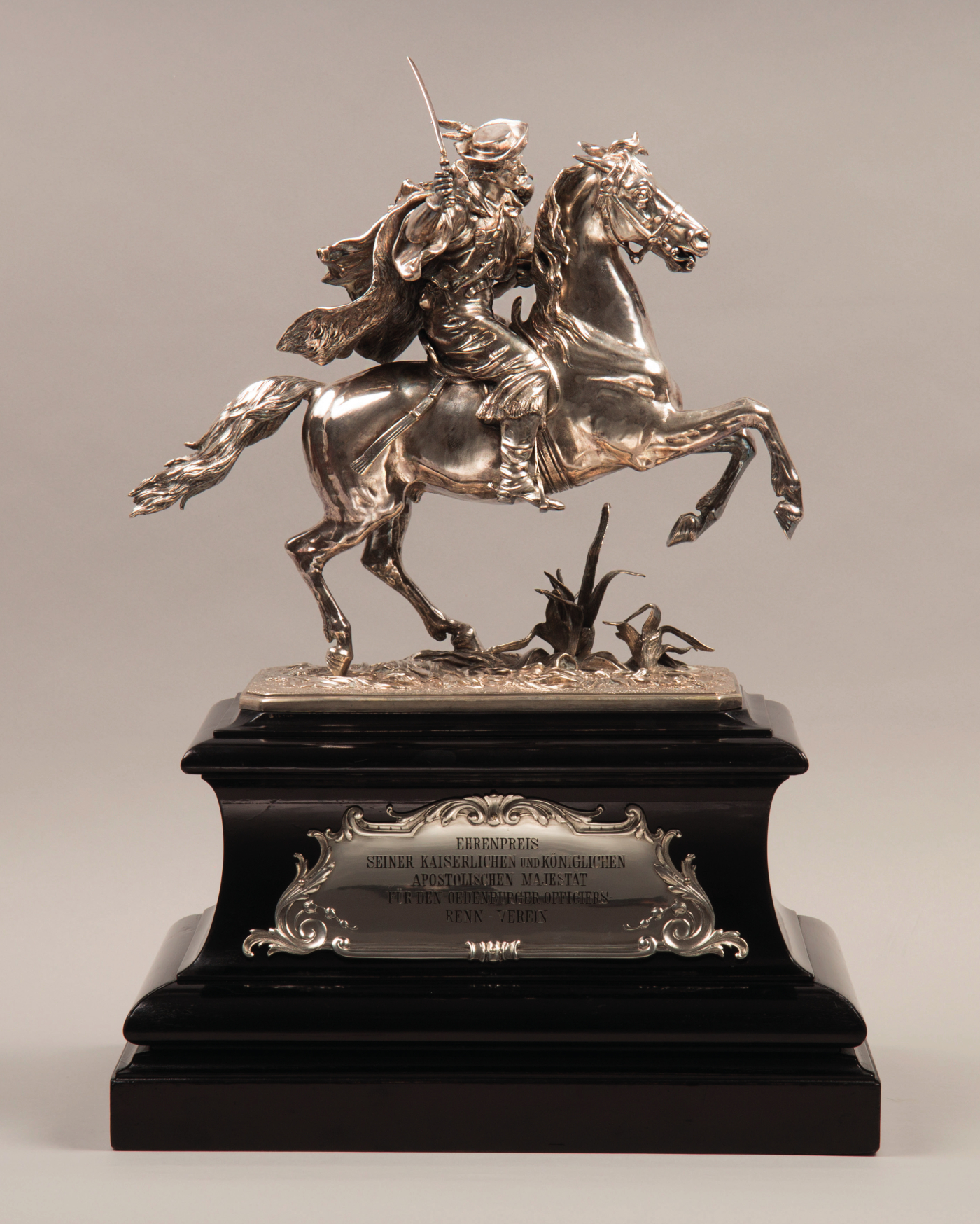From the Repository
Even though not presented to public, these items can attract, surprise and pique curiosity just like their “more famous colleagues” on display
Items from museums’ collections stored in repositories are the bedrock of their functioning and Bratislava City Museum’s collection consists of almost 140,000 objects.
The From the Repository project aims to call attention to diversity, range and specificity of city museum’s collection. It gives the opportunity to regularly see little-known items and artworks handpicked by museum’s curators in Old Town Hall Courtyard.
These will be changed every two months. A horse race award was the first of such items to be seen from February 15 to April 11, the second such item was the sculpture depicting the founders of Kiev shown from April 12 to June 13 and the third exposition are two Ukrainian items connected with Janko Jesenský.
Clay vase and diary from the period of Russian captivity in Kharkiv
In the Bratislava City Museum there are two objects from today’s territory of Ukraine, which are connected with the person of the writer Janko Jesenský – a clay vase and a diary from the period of his Russian captivity in Kharkiv (due to the light-sensitivity of the material it is represented only in text form). The vase was part of the facility of Janko Jesenský’s apartment in Bratislava and the diary forms part of his personal possession.

The vase was made in the 1920s – 1930s in Uzhgorod, Carpathian Ruthenia, which was then part of Czechoslovakia. It is decorated with a remarkable decoration – glaze partially scratched to the clay with subsequently painted and burnt decoration.
The diary from Kharkiv is a valuable historical source. At the end of June 1915, Jesenský was captured by the Russians on the territory of today’s Poland and went to a prison camp in Kharkiv, where he spent the whole summer – months of July to September, during which he also wrote poetry. He was an observant observer, the diary helping him overcome the gray everyday life of the prisoner.
Commemorative gift of the city of Kiev – sculpture of a ship with the founders of the City of Kiev
Sculpture is a reduced reproduction of the Kiev memorial dedicated to the city founders, unveiled in Kiev in 1982 on the occasion of the 1500th anniversary of the town. Its authors are the sculptor Vasyl Borodai and the architect Mykola Feshchenko. They were inspired by the legend described in the 11th century by the monk Nestor in the chronicle The Primary Chronicle. According to this legend, the city of Kiev was founded by three brothers Kyi, Shchek and Khoryv together with their sister Lybid. Each of them settled on one of the hills around the Dnieper River, which subsequently got the names Borychiv, Shchekovina and Khorivitsa. When these settlements gradually grew and merged into one unit, the new city was named after the oldest of the Kiev brothers, and according to this legend the city of Kiev was created. Their sister’s name was carried by a river that ran through the city.

The town twinning project started in Europe after the Second World War. The main essence of the project was the idea of a closer mutual understanding of the inhabitants of demographically or characteristically similar places in different states. Subsequently, social contacts were reflected in mutual economic as well as cultural cooperation. Such contacts have persisted for a long time between Bratislava and Kiev. In this way, in 1982, a gift from the city of Kiev, a sculpture of a ship with the founders of this city, went to the Bratislava City Museum. This collection symbolizes long-term friendly relations and cooperation between Bratislava and Kiev.
Honorary Prize from the 1898 Pressburg equestrian race
The riding award was made by the leading Vienna factory producing silver and metal items Klinkosch that held the title of the Purveyor to the Imperial and Royal Court. It won prizes at World Exhibitions in Vienna (1873) and in Paris (1878) and produced a number of riding awards of top quality.
Sopron Officer Riding Association saw a period of its development in the 1890s. Its honorary president was the archduke Otto, nephew of Emperor Franz Joseph I. The monarch and several other members of the Habsburg House regularly provided the Association with lavish awards and generous financial gifts on the occasion of its horse race. From 1897, a part of this horse race was moved to Pressburg, more precisely to the racetrack of Petržalka. In 1898, Franz Joseph I donated a special award for the rider of the winning horse in the great Pressburg steeple-chase. It is likely that it was held on 3 May 1898 under the aegis of the archduke Franz Ferdinand of Austria. The award was won by the lieutenant and count Paul Orssich with his mare Thekla.
